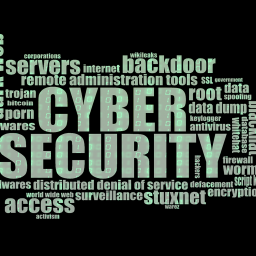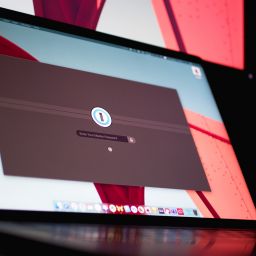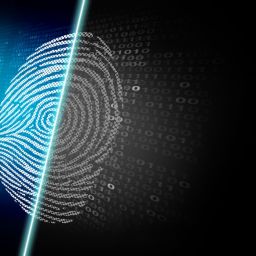
The Advantages of Continuous Cybersecurity Monitoring
As technology continues to advance, digital solutions have become an essential part of businesses and individuals’ daily operations. With the increase in digital transactions, the risk of cyber threats has also risen. Cyberattacks can cause significant damage to businesses, including financial loss, reputational damage, and data breaches. To prevent these threats, individuals and businesses need to prioritize cybersecurity by continuously monitoring and updating their security measures.
Continuous cybersecurity monitoring is critical because the threat landscape is constantly evolving. Cybercriminals are developing new tactics, and businesses must keep up with these changes to remain protected. Through continuous monitoring, businesses can identify vulnerabilities and respond to potential threats before they cause damage.
Below are some reasons why continuous cybersecurity monitoring is necessary, as well as the benefits of it, which are explored in depth.
1. Proactive Measures in an Evolving Threat Landscape
Cybercriminals have become increasingly advanced and sophisticated in their tactics, making it essential for enterprises to take proactive measures to secure their systems and data. One way to do this is by regularly monitoring their systems for potential vulnerabilities and attacks. By identifying these vulnerabilities before cybercriminals can exploit them, companies can strengthen their security defenses and prevent costly data breaches.
Another proactive measure that businesses can take to strengthen their cybersecurity is to identify and address vulnerabilities in their software and systems. Regular security audits and penetration testing can help uncover weaknesses and potential entry points for cyber-attacks, allowing companies to take the necessary steps to strengthen their security.
It is also important for companies to stay up to date on the latest security threats and trends, as cybercriminals are constantly evolving their tactics. By staying informed and adapting their security measures accordingly, companies can stay ahead of potential threats and reduce their risk of a successful cyber-attack.
Additionally, training employees on best practices for cybersecurity can also help prevent breaches. This includes teaching employees how to identify phishing emails, the importance of strong passwords, and the risks of using public Wi-Fi networks.
2. Detects Anomalies
To maintain a secure digital environment, it’s crucial to implement continuous cybersecurity monitoring measures. This approach enables businesses to proactively identify and respond to potential security breaches and cyber-attacks, minimizing the damage caused by these incidents. With the increasing sophistication of cybercriminals and the evolving threat landscape, regular cybersecurity monitoring is essential to ensure the safety of critical data and systems.
Continuous cybersecurity monitoring involves the analysis of systems and data to establish a baseline of security and identify deviations from that baseline. This proactive approach helps businesses identify any potential anomalies or suspicious activities before they can cause harm. Cybersecurity experts must constantly test and monitor processes to detect possible anomalies using data observability tools. These tools use artificial intelligence and machine learning algorithms to detect unexpected changes in data sets and network traffic, allowing cybersecurity teams to take immediate action.
Furthermore, cybersecurity monitoring helps businesses identify and address potential security vulnerabilities and gaps in their existing security infrastructure. This proactive approach allows companies to implement additional security measures and protocols to prevent data breaches, cyber-attacks, and other security threats. By detecting and addressing potential threats before they can cause damage, businesses can minimize the risk of financial loss, damage to reputation, and regulatory compliance issues.
3. Compliance with Regulations
The role of cybersecurity experts is essential in ensuring that business systems are in compliance with various data security, privacy, and cybersecurity regulations. The monitoring of systems and networks on a real-time basis is crucial to detecting and responding to any security breaches or cyber attacks.
In addition to monitoring, it is also essential for enterprises to establish a robust system for alerts and notifications to stay ahead of potential cyber threats. This includes setting up early warning systems that provide immediate notification of any suspicious activity or unauthorized access attempts.
Continuous testing of networks is also critical to ensuring that any vulnerabilities are identified and addressed promptly. Cybersecurity experts can execute strong access control measures and establish a comprehensive Information Security Policy that not only helps comply with regulations but also prevents the possibility of breaches and violations of regulations.
Moreover, cybersecurity experts must stay up to date with the latest security threats and best practices to ensure that the systems they are responsible for remain secure. This involves ongoing education and training to keep up with the rapidly evolving threat landscape and new methods of attack.
4. Improves Decision-Making Capability
Continuous monitoring of an enterprise’s cybersecurity not only helps identify potential risks and vulnerabilities but also assists in making informed and better decisions to build a robust cybersecurity program. This, in turn, enhances the enterprise’s decision-making capabilities and minimizes the risk of costly data breaches and penalties associated with non-compliance. The data gathered from the monitoring process provides valuable insights into the organization’s overall security posture, enabling decision-makers to identify gaps and address them promptly.
Moreover, constant monitoring also helps in conducting training programs for employees and investing in secure IT infrastructure. By tracking and analyzing system and network performance, decision-makers can identify potential weaknesses in the organization’s security system and take necessary measures to address them. This ensures that the employees are trained to recognize and prevent cyber-attacks, and the infrastructure is secured against potential threats.
5. Facilitates Resource Allocation
Effective resource allocation is crucial for building strong security systems in any organization. However, making informed decisions regarding resource allocation can be challenging, especially when it comes to cybersecurity.
Constant monitoring and tracking of systems and networks can make the resource allocation process easier. With the help of continuous cybersecurity monitoring, businesses can identify critical systems and allocate resources accordingly. Moreover, it also helps in identifying potential security risks and vulnerabilities, which need to be addressed immediately.
Continuous cybersecurity monitoring also facilitates proper resource allocation by providing businesses with a better understanding of their risk exposure and security status. This understanding helps organizations build a robust cybersecurity program that aligns with regulatory mandates and industry standards.
Having a strong cybersecurity program in place not only helps businesses avoid costly breaches and non-compliance penalties but also gives them the confidence to focus their resources on their core business activities, such as production, sales, marketing, and customer service. Furthermore, investing in cybersecurity can even become a competitive advantage for businesses, as it demonstrates their commitment to protecting their customers’ sensitive data and business assets.
6. Avoids Business Delays and Disruptions
Data breaches and cybersecurity problems can have a significant impact on a business’s reputation and customer trust. When customers lose faith in a business’s ability to protect their personal information, they are likely to take their business elsewhere. Therefore, it is crucial for businesses to take proactive measures to prevent such incidents and prepare for any potential disruptions. This is where a Business Continuity Plan (BCP) comes into play.
A Business Continuity Plan is a set of procedures and strategies that help businesses maintain their critical functions in the event of a disruption. However, the BCP is only effective if it is regularly reviewed, tested, and updated. Continuous cybersecurity monitoring is necessary to ensure that the BCP is adequate, up-to-date, and ready to be executed if needed.
One of the essential components of a BCP is data backup and recovery. In the event of a cyber-attack, businesses need to have a plan in place to recover lost or damaged data quickly. Continuous cybersecurity monitoring can help businesses identify potential risks to their data and take necessary precautions to prevent data loss or damage. Additionally, monitoring can help businesses identify any weaknesses in their data backup and recovery procedures and make necessary improvements to ensure that data is protected and recoverable in the event of a breach.
By regularly monitoring their cybersecurity measures and implementing a comprehensive Business Continuity Plan, businesses can be better prepared to face potential cyber-attacks and minimize the impact on their operations. This approach not only prevents potential business delays and disruptions but also helps to maintain customer trust and satisfaction.
7. Maintains Business Continuity
As companies shift from traditional office settings to remote or hybrid work models, they have started investing in digital technologies to enable automation and boost employee productivity. Project management systems, communication apps, and customer relationship management systems are among the tools that businesses have begun to rely on to manage their operations.
While these technologies can bring many benefits, they also pose significant risks to cybersecurity. This is particularly true in the context of remote or hybrid work models, where employees may use personal devices or unsecured networks to access company data and systems. To prevent cyber-attacks, companies must invest in relevant cybersecurity technologies, such as cloud security solutions, that can secure their apps, websites, APIs, and infrastructure.
Continuous cybersecurity monitoring is an essential part of maintaining a secure remote or hybrid workplace. It enables companies to identify potential security threats and vulnerabilities and take proactive measures to address them. Through regular monitoring and testing, cybersecurity experts can detect and address security gaps and risks before they can be exploited by cybercriminals. This, in turn, helps maintain business continuity by preventing cyber-attacks and minimizing the risk of costly data breaches that can disrupt operations and damage a company’s reputation.
8. Provides Peace of Mind
In today’s digital age, maintaining secure software programs is more important than ever. Cybercriminals are always on the lookout for vulnerabilities in business systems, using sophisticated techniques to exploit weaknesses in networks and steal sensitive data. Without proper IT security measures in place, businesses are at risk of falling prey to cyber-attacks, which can result in reputational damage, financial losses, and legal consequences.
One way to mitigate these risks is through continuous cybersecurity monitoring. By regularly monitoring your systems and networks, you can detect any anomalies or potential threats before they cause significant harm to your business. This allows you to take proactive measures to prevent cyber-attacks and data breaches.
With a comprehensive and holistic cybersecurity solution in place, you can be assured that your network and data are safe and secure, even outside of business hours. This includes investing in relevant cybersecurity technologies and cloud security solutions to maintain the security of your software programs in a remote or hybrid work environment.
Moreover, a robust cybersecurity solution can help you identify immediate and adjacent threats that could expose your business data to unauthorized people or entities. By having a clear understanding of your risk exposure and security status, you can make informed decisions about resource allocation, training programs, and IT infrastructure investments.
9. Saves Time and Money
Ransomware attacks have become an increasingly common threat to businesses, yet a large percentage of organizations lack plans to respond to such crises. This lack of preparedness is concerning, given the potential damage that a ransomware attack can cause to a company. Cybercriminals can demand significant sums of money for ransomware events, which can range from thousands to millions of dollars. Victims often feel forced to pay the ransom to regain access to critical data or business systems, but even then, there is no guarantee that the data will be fully recovered.
To avoid such situations, it is essential to take steps to strengthen your network and data security through continuous monitoring. As cybercriminals become more advanced in their tactics, it is crucial to adopt more sophisticated and intuitive security systems to stay ahead of them. Hiring advanced cybersecurity services that offer 24/7 monitoring using state-of-the-art tools and equipment is an important step in preventing financial losses or even bankruptcy or business closure.
Continuous cybersecurity monitoring can help detect ransomware threats before they cause significant damage. Monitoring systems can detect anomalies and deviations from normal patterns, and security teams can quickly respond to and contain potential threats. It is also essential to establish and maintain up-to-date backup and disaster recovery plans in the event of a successful ransomware attack.
Investing in cybersecurity measures and continuous monitoring is not just a matter of mitigating financial losses but also protecting your business’s reputation and maintaining the trust of your customers. By staying proactive and vigilant, you can reduce the likelihood of a ransomware attack and be better prepared to respond to one if it occurs.

















